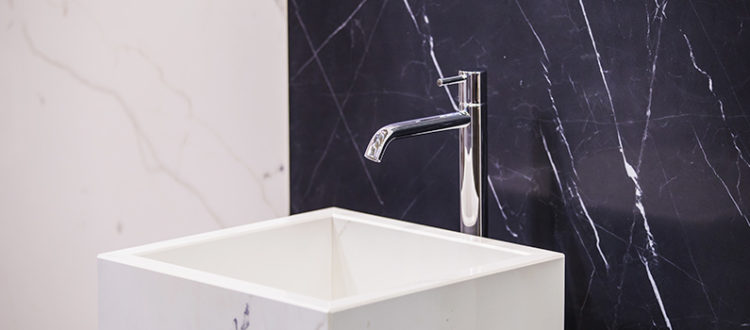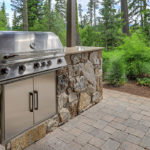How to Care for Marble Sinks
Caring for Classic Marble
There’s no doubt about it: marble is meant to last. However, this elegant stone material is also porous, making it prone to damage if not properly cared for. Read more for the best tips on preserving your marble sink.
Clean It
Cleaning marble is a little different than cleaning other sink and countertop surfaces. Because of its porosity, it’s essential to avoid acidic or abrasive cleaning agents. Similarly, avoid scrubbing sponges with course, scratchy fibers. Instead, opt for a more simplistic cleaning routine. Vacuum and sweep up any loose debris and dirt. Then, dampen a soft sponge or mop, and clean with that. If it needs something soapy to get it clean, make sure to get a cleaner specific to marble.
Seal It
There’s no way to make marble totally stain-proof, but sealant can certainly help. Sealing your marble pieces repels staining agents and corrosion. The surface is covered by a sealant, preventing any liquid from seeping into the marble. Not sure if your marble needs sealing? Drop some water on the counter; when it seeps into the stone instead of beading, your marble is ready for resealing. Not sure how? Read ahead.
Spray Counter With Cleaner
Spray any stone surface with marble cleaner, and buff it dry with a soft cloth.
Brush on Sealer
Pour sealer into a container with an opening big enough to put a paintbrush through. Dip a foam paintbrush in the sealer and brush it in strokes across the counter, overlapping a little as you go back and forth.
Buff Away Excess
After letting the sealer sit for about 10 minutes, buff off any excess sealer with a new, dry, soft cloth. Rub until the marble is not tacky to the touch. You don’t want to leave any excess sealer sit on the stone, as it could disrupt its finish. It should be completely dry by the time you’re done buffing it.
Protect It
The easiest way to protect your marble sink from corrosive substances is to prevent corrosive substances from ever touching it. Many cleaners, even natural ones, include citrus derivatives and vinegar. Both of these are extremely acidic, making your sink more prone to damage. This extends to anything you pour down the drain. Avoid disposing of harsh materials down a marble sink.
Spot Treat It
Accidents happen, and it’s best to treat them as quickly as possible. A common stain removal trick is to mix baking soda and water into a thick paste, applying it to the stained spot, covering it with plastic, and letting it sit for 24 hours. There are many other at-home recipes available online. Before choosing a method for spot treating, research to make sure the chemicals in the stain won’t have an adverse reaction to your cleaning substances.
Go Pro
As always, if a stain or feature from corrosion seems out of your skillset, it’s best to contact a professional. There are a number of companies dedicated solely to professionally cleaning stone home features. Their services usually go so far as to performing whole restoration projects.
Own It
Over time, your marble sink will experience its fair share of knicks, chips, and even patina. While some may see these features as unsightly, it’s actually quite the opposite: slightly worn stone features make a home seem lived in. Marble is known for creating a more cold, stoic atmosphere, so the marks that make your marble unique only add to the warmth of your home.
Impression Does Marble Best
When it comes to marble sinks or any other marble home feature, Impression is number one in installation and preservation. All of our stunning custom pieces are handcrafted, and Impression takes great pride in making sure that marble aspects are properly sealed and cared for. If you’re looking to add marble, or even restore existing marble, call Impression today!
















